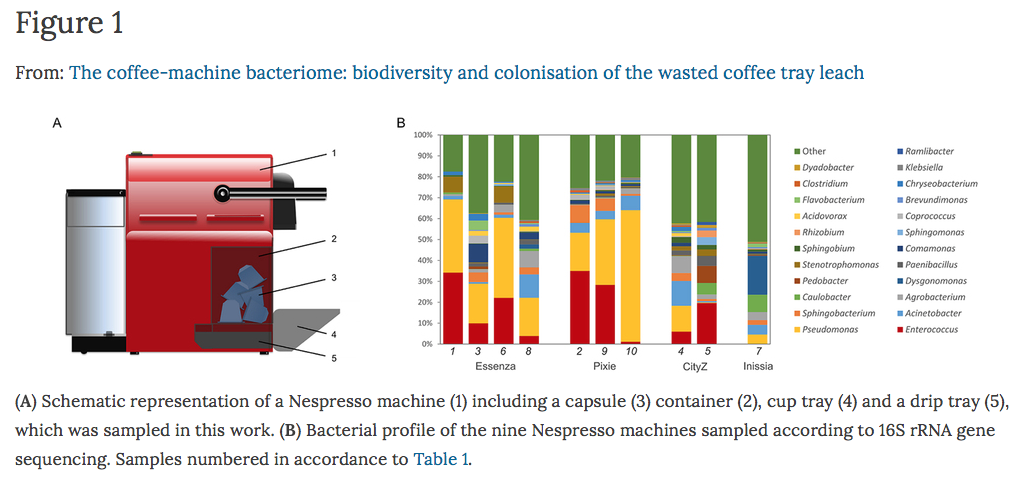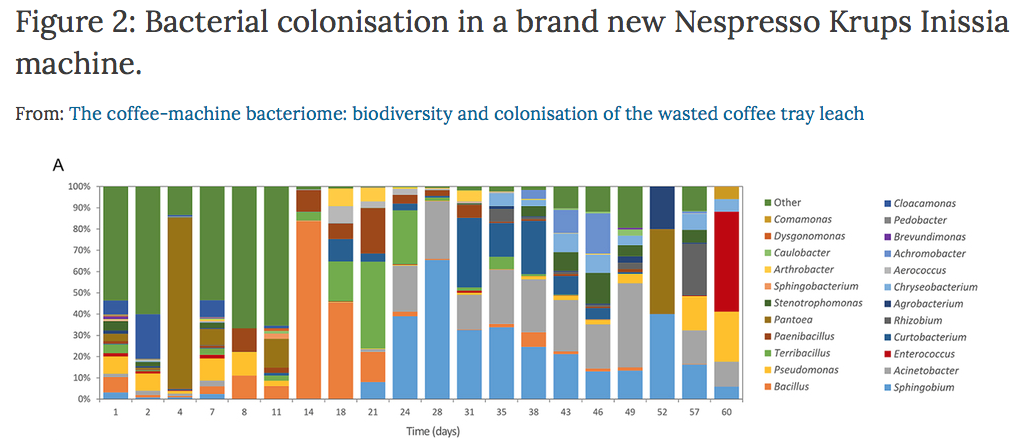Here is a fun recent article by Vilanova et al. on the coffee machine bacteriome (open access in Nature’s Scientific Reports) that made me wonder why didn’t we think of doing this. In this study, the authors sampled the inner drip tray (below the capsule container) of nine different Nespresso capsule coffee machines. They found that Enterococcus sp. and Pseudomonas sp. were abundant in most of the machines (Figure 1). Other frequent genera were Stenotrophomonas, Sphingobacterium, Acinetobacter and, to a lesser extent, Coprococcus, Paenibacillus or Agrobacterium. The presence of Pseudomonas spp. in these coffee makers is interesting (and potentially useful) because they are known to be able to degrade caffeine.
In addition, over two months, the authors characterized the ecological succession of a new Krups Inissia machine that they conveniently placed in a room adjacent to their laboratory. Generalist bacterial taxa were early colonizers, including Pantoea sp. (Proteobacteria) and Bacillus sp. (Firmicutes) that were eventually displaced by Pseudomonas sp. and Enterococcus sp. (Figure 2).
According to the authors, this is the first study to show that coffee leach provides a rich substrate for bacterial growth and that can support a diverse assemblage of bacteria. They suggest that further metagenomic studies are warranted. Unfortunately they conclude the article by recommending the use of bacteriostatic agents for cleaning coffee makers.



So, by using the bacteriostatic agents for cleaning the coffee makers, we can reduce or prevent the assembling of the bacterial colony? Is there anything else that can be done?
Just washing with soap and water the capsule container regularly is enough.
yeah.. Me too
It turns out that the hipsters were right. Pour over coffee is the better choice! This way you can have freshly roasted beans, control the grind, and, by using a glass or ceramic coffee dripper, you can avoid potential health and environmental risks. For example, chemicals are leached from plastics that are heated or come in contact with hot water and bacteriostatic agents include chemical disinfectants that may be toxic or mutagenic. Otherwise, I’d recommend emptying the reservoirs periodically and letting them air dry completely.